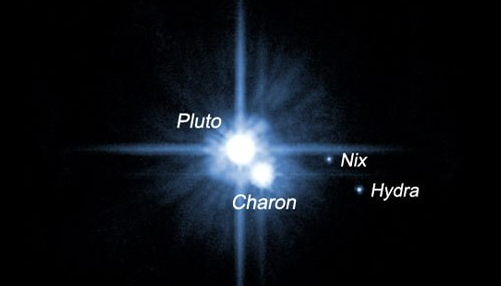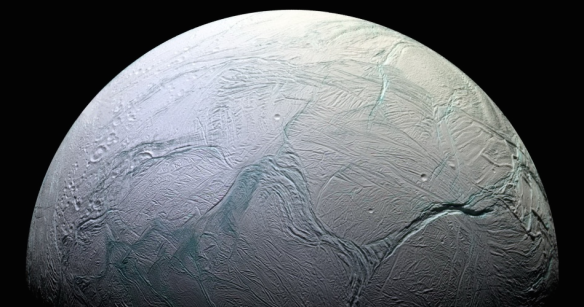
NASA has recently announced that a new rover will be sent to Mars by 2020.
Another one?
They already have three there. Spirit and Opportunity landed first, in 2004. While Opportunity is still scuttling around, Spirit has been stuck in a sand pit for over two years now and its mission had ended. The latest to join the part is also the top of its class: Curiosity arrived last August and it’s doing great, making news headlines out of both actual merit and bad journalism. It even has its own Twitter feed.
After it started analyzing rocks and dust on Mars, the head boffin of the Curiosity team casually declared in an interview that the mission was to be «one for the history books». The fact that NASA had a press conference scheduled just days later made the rumors spread like wildfire: surely some sort of life form had been found on the red planet. The story was immediately picked up by the mainstream media. But it was just a misunderstanding: first, NASA holds regular press conferences, so this was absolutely normal. Second, the findings were “historical” simply because it had been confirmed that Curiosity was functioning properly. It was collecting samples and analyzing them on site, like the shiny chemistry lab on wheels it’s designed to be (it’ll take a long while to compile the results). That’s pretty big news by any standard, but it also highlights a matter of perception: if you had a presentation tomorrow in front of the CEO and your most important clients, that would be quite “historical” to you, not so much to the rest of the world. At NASA they have, similarly, a different way of perceiving their accomplishments than the general public, and sometimes this generates confusion.
But it definitely made Curiosity famous.
So why is NASA spending $1.5 billion to send yet another rover? Probably because when times aren’t great you just stick with what works best: the space program has very little funding and there’s no room for daring endeavors. There’s a plan to bring back rock samples from Mars, like we did with the Moon, and some of the money NASA is getting has been locked for that goal, so maybe they don’t even have a choice. Also, yet another rover could help further pave the way for a manned mission there.
But I can’t help the feeling that even NASA is doing sequels now.
I’m not a huge fan of Mars. It’s a dead rock with two puny captured asteroids for moons, and it’s way past its cosmic prime. Much more interesting is Jupiter, my favorite planet: not only it rules the Solar System in size, it has literally shaped its current arrengement. When Jupiter and Saturn engaged in a gravitational tug-of-war, billions of year ago, they created a turmoil powerful enough to eject Neptune and Uranus from their orbits, switch their positions, and send them in a faraway exile from the Sun, all the while leaving poor Uranus irrevocably lopsided. Plus, we wouldn’t be here without Jupiter. Because of its huge gravitational field, it acts as a cosmic shield for stray comets and asteroids which could otherwise pose a threat to us. One famous impact happened in 1994, when comet Shoemaker-Levy ploughed into Jupiter, shattered to pieces by its massive gravity before disappearing into the gas giant to great spectacle, scarring it for months. But this happens all the time: a large asteroid flew into Jupiter just days ago, but such events are so unpredictable (there’s lots of rocks flying around) that this one was only captured by an amateur’s webcam. Let’s just be thankful that our big pal Jupiter is out there for us.
Jupiter’s array of 67 confirmed moons hosts some of the most interesting bodies of the Solar System, chiefly among them Europa, a cold planetoid about the size of our own Moon which is believed to have oceans of liquid water under a thick crust of ice. And because Europa is constantly caught between the bickering gravitational forces of its host planet and its bigger moons, it’s probably subject to enough friction to have a hot core. Which means its oceans could have developed underwater hydrothermal vents similar to those found at depth on Earth, where they are populated with interesting life forms called extremophiles because of the extreme conditions they are able to withstand. This process, called tidal heating, is the same that makes the surface of Io, another one of Jupiter’s moons, look like a big ball of rotting cheese:

Io is covered with over 400 volcanoes, making it by far the most geologically active body in the Solar System, even though it’s so far away from the Sun that its average surface temperature is -170 °C. But extreme cold and even the absence of water may still not rule out the possibility of life: take Titan, Saturn’s largest moon, so big that it is larger than planet Mercury. NASA landed a probe called Huygens there, in 2005, which confirmed the presence of rivers and possibly lakes of liquid methane. Methane is an organic compound (because it contains carbon: that’s what organic means), so Titan could be a little bit like Earth about 3.7 billion years ago, when it was starting to become hospitable to life. When the Sun explodes into a red giant, in about five billion years, we’ll be long gone but Titan will get warmer and might be one of the best spots in the Solar System to develop a post-main sequence life habitat around our star.
In Titan’s neighborhood there’s also Enceladus:

This chilly moon seems to have all the ingredients necessary to life: hydrogen, carbon, nitrogen and oxygen, as the Cassini probe confirmed by sniffing one of its vaporous plumes during a flyby. Enceladus is also the most reflective body in the Solar System: it has an albedo of 0.99, which means it reflects 99 percent of all the sunlight it receives.
Admittedly, NASA does have a long-range spacecraft currently en route to somewhere we’ve never been to. It’s called New Horizons and it will reach Pluto in 2015. Ironically, the mission was launched in 2006, before Pluto was stripped of its planet status (and yes, it was the right decision). It’s still interesting because we know so little about this faraway world. It’s so distant we can’t even get a decent picture, not even with the Hubble Space Telescope, because it’s too small an object. Here’s one of the best we have:

As you can see it’s actually a binary system. Pluto has five moons, but the biggest, Charon, is about a third the size of Pluto itself, the largest moon compared to its primary that we know of, anywhere. This neatly illustrates a little know fact about orbits: when you think of a moon, you think of a smaller object circling around a larger, “fixed” one. Well, for starters, an orbit is not a circular path but a continuous free-fall: gravity is not a magical force that attracts things, but a curvature of space induced by mass (it is also still a force: relativity is complicated stuff). So when something travels through an orbit, it actually goes in a straight path through curved space, in a constant free-fall through a gravitational field that never results in an actual collision because of velocity. It’s the same effect that astronauts experience in space, something incorrectly called zero-gravity: if you’re orbiting on the Space Shuttle you feel weightless not because Earth’s gravity isn’t there (it’s actually still 90 percent as strong as it is on the surface), but because you’re free-falling towards it. But since the spacecraft itself is also free-falling, there’s nothing to stop your fall, hence the weightlessness. You are technically in free-fall towards the center of the Earth right now, but the floor is stopping you. Get in an elevator on a high floor and cut the cables, and you can experience weightlessness right here on Earth (or book a ride on one of these planes).
But back to Pluto and Charon. When a moon orbits a planet, the two bodies are actually both orbiting their center of gravity, a point where the masses of the two objects balance called the barycenter. Because in most planet/moon systems the planet is vastly larger, this is usually hard to spot: our Moon, for example, doesn’t orbit around the very center of the Earth, but around a point 1,062 miles below the surface of our planet, where the two masses balance. This is so close to the dead center that Earth appears to stay put, but it actually shakes a bit. Stars also do that as a result of planets orbiting around them, and this gravitational wobble is one of the ways you can infer the presence of planets around a star, something otherwise difficult to see because of the blinding light.
But with Pluto and Charon, since the moon is so large compared to its host, the center of gravity actually lies outside Pluto. So they both circle around, orbiting their barycenter:

The two are tidally locked, which means they are always showing each other the same face (as our Moon does, hence “the dark side of the Moon”), but they’re also in a synchronous orbit, so Charon remains forever fixed in the same position in the sky for an observer on Pluto, provided they’re standing on the right side of the planet (there’s never a Charon in the sky on the other side).
So there’s a lot of cool stuff in the Solar System besides Mars. Truth be told, many such missions are very costly and delicate to arrange, and NASA is suffering its worst budget constraints ever. For example, the technical challenges associated with penetrating Europa’s ice sheets are enormous, and NASA’s famous probe Galileo, which explored the Jupiter system until 2003, was carefully commanded to crash into the giant planet at the end of its mission to avoid any chance of contaminating the moons, especially Europa itself (the spacecraft was not sterilized). Still, it doesn’t detract from the fact that yet another Mars rover is a bit boring and unimaginative.
Isn’t space exploration all about boldly going where no man (or rover) has gone before? For now, NASA seems happier in safely sending stuff where they already have.
 Step aside, Europa: Enceladus is now the coolest of moons. And our best bet at finding alien life.
Step aside, Europa: Enceladus is now the coolest of moons. And our best bet at finding alien life.







